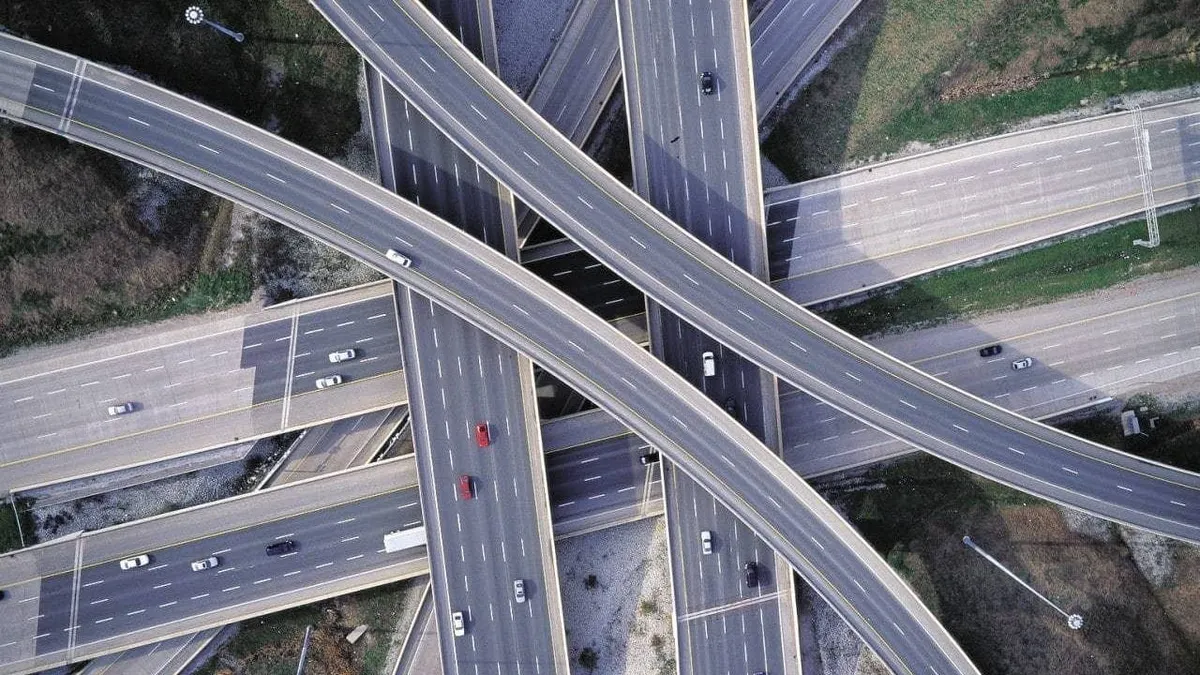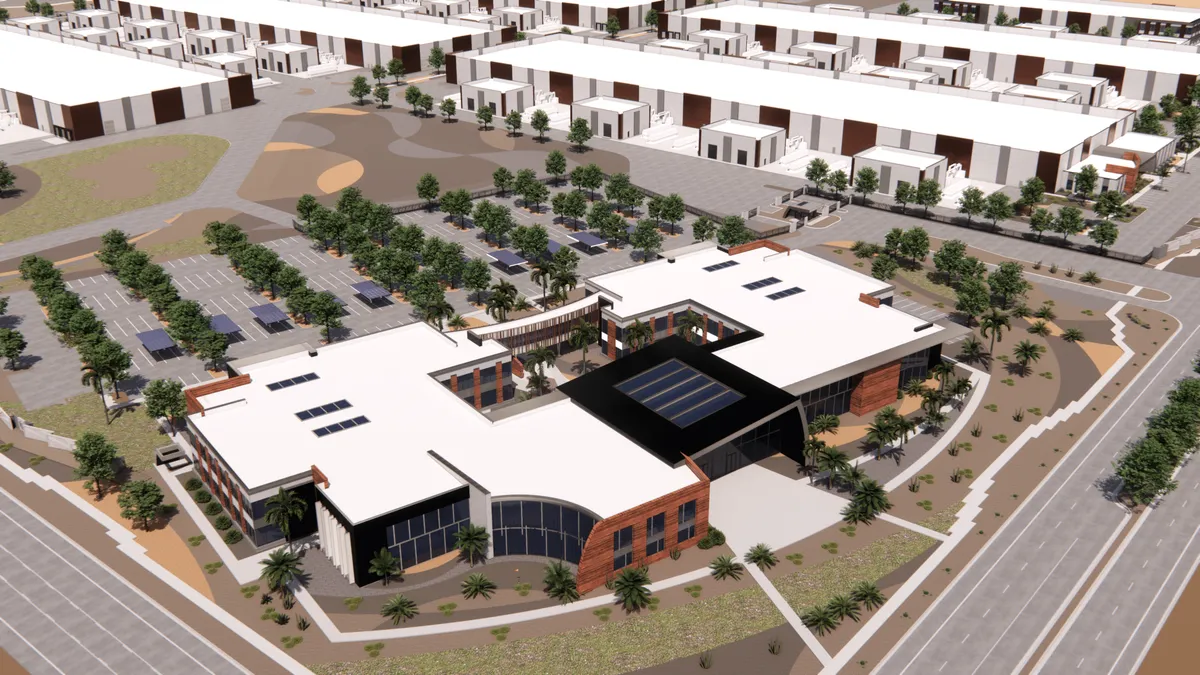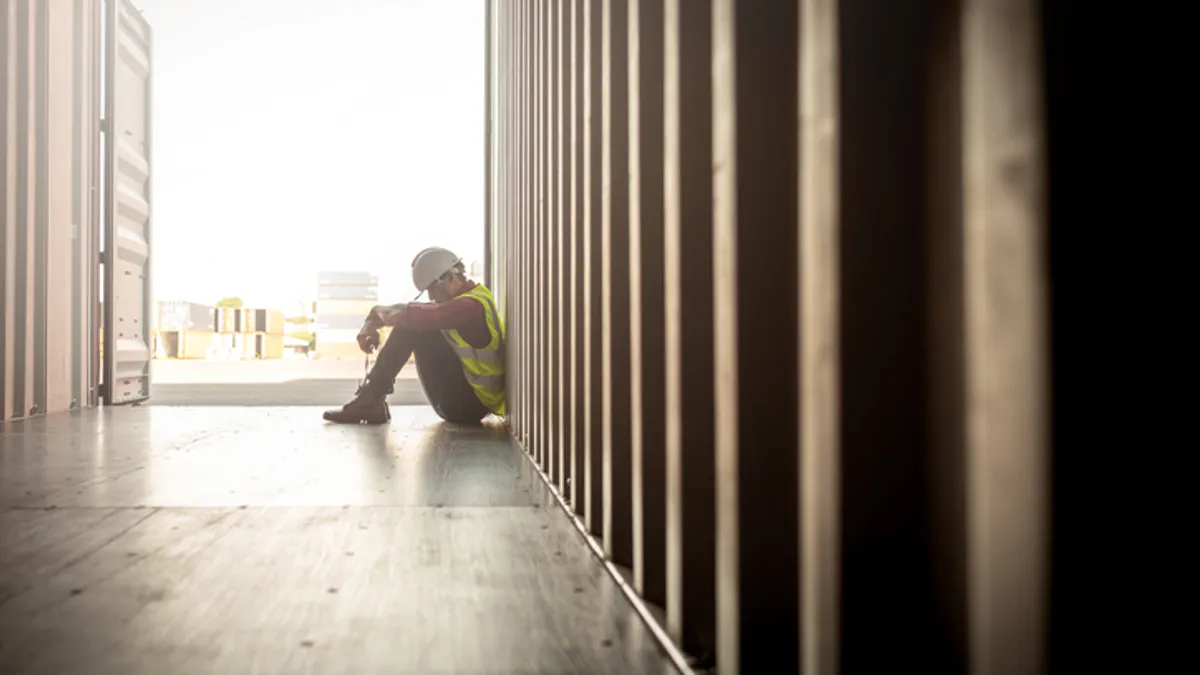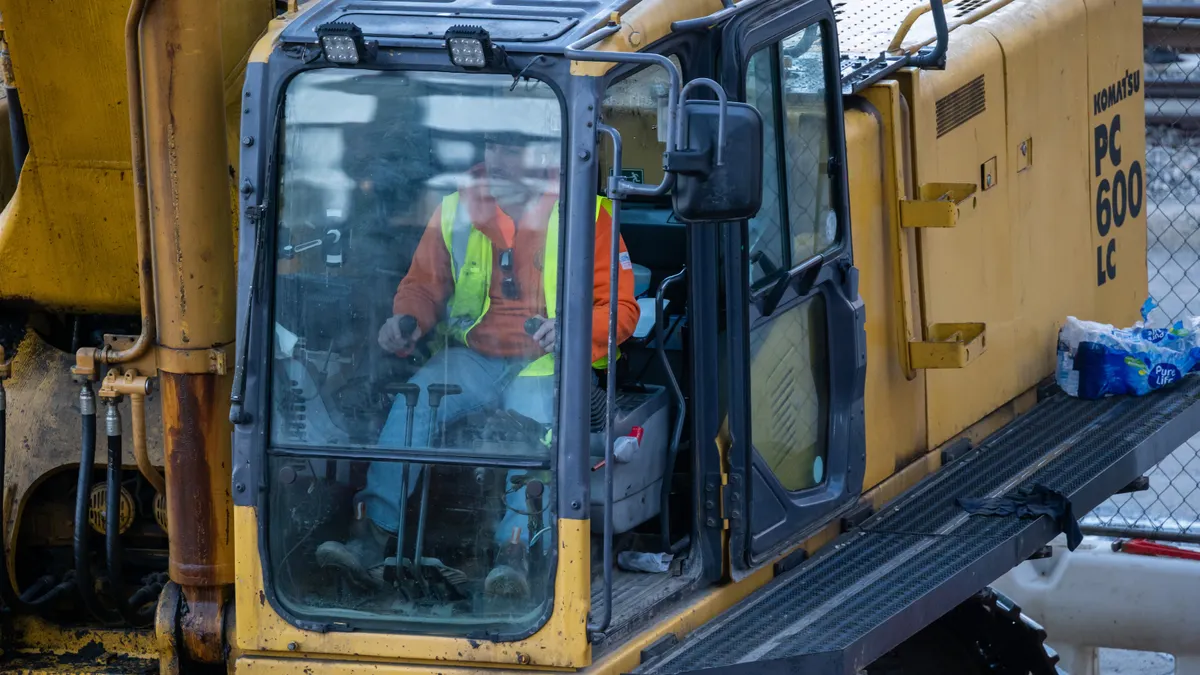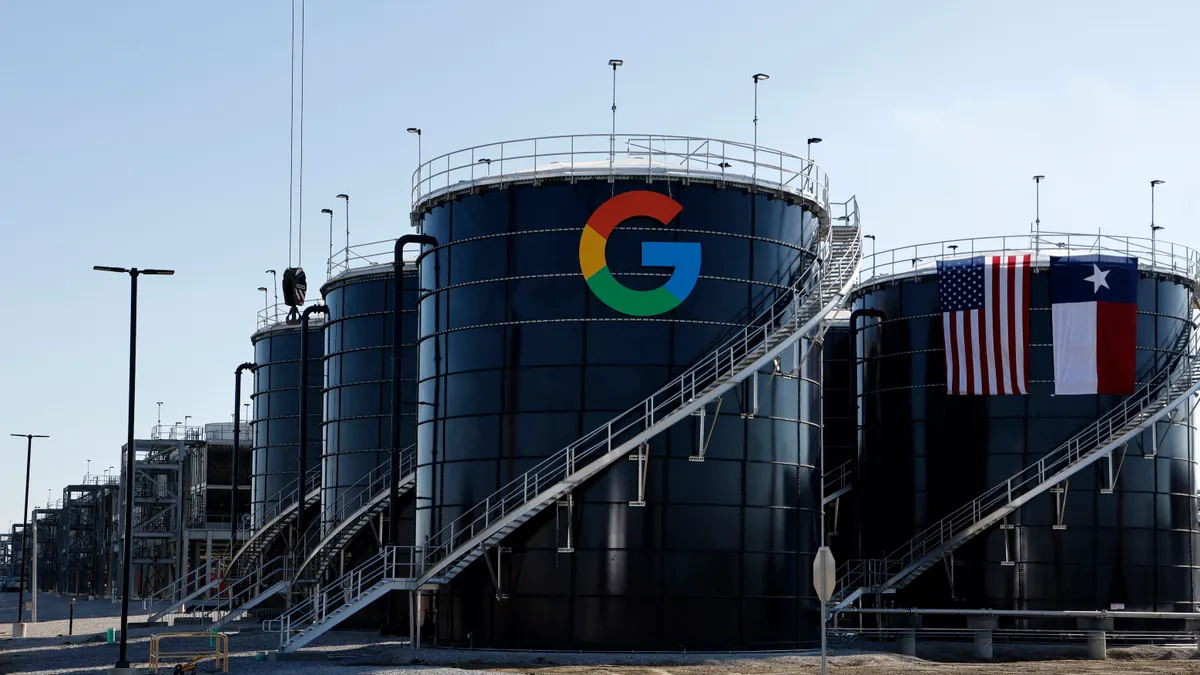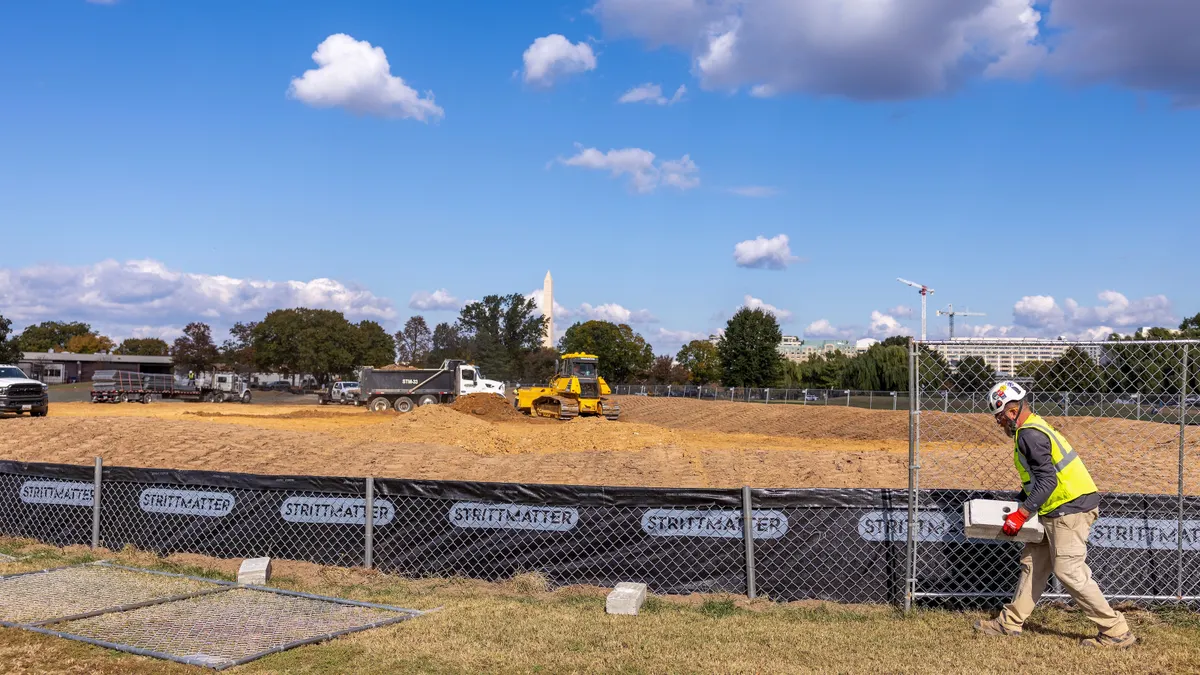Even as federal infrastructure dollars have become more uncertain in the U.S., the private sector can step in to help close the public funding gap.
That’s according to Silvia Ruiz, global head of investor relations at Amsterdam-headquartered civil engineering firm Ferrovial, who noted that urbanization and population growth are driving the need for transportation, data centers and energy projects, making infrastructure an attractive sector for investors.
“From express lanes to smart cities, infrastructure demand is soaring,” Ruiz told Construction Dive.
Indeed, infrastructure is a hot item for the likes of New York City-headquartered investment manager BlackRock, according to Infrastructure Investor. In addition, last month, Barings, the Charlotte, North Carolina-based unit of Massachusetts Mutual Life Insurance, collected $950 million for its private equity and infrastructure fund for high-growth energy, digital infrastructure and transportation assets, The Wall Street Journal reported.
Here, Ruiz talks with Construction Dive about private infrastructure funding, global trends and which sectors are set to be hot in the coming years.
The following has been edited for brevity and clarity.
CONSTRUCTION DIVE: What kinds of infrastructure investment trends are you seeing right now?
SILVIA RUIZ: We believe infrastructure is an attractive sector from an investment point of view — stable, inflation-resistant and fueled by state spending. Through public-private partnerships, the private sector helps close the funding gap, ensuring industry stability.

Consumers interact with major infrastructure daily by driving on highways, passing through airports and witnessing firsthand the surge in travel and tourism. By investing in what they know and use, investors can develop a deeper understanding of how the industry grows over time, like with population influxes to growing cities.
Overall, as cities, communities and businesses grow across the U.S., the need for infrastructure projects and improvements increases. For example, we’re seeing continued growth in highways and airports, driven by cities' needs to alleviate congestion and airport modernization efforts as populations grow. The necessity of infrastructure creates a steady demand for investments.
What do you expect from the Trump administration in regard to infrastructure investment?
We remain bullish on the infrastructure sector. The long-term need for modern, resilient infrastructure in the U.S. remains unchanged as the industry supports community growth in America’s expanding cities.
Ferrovial has a track record of financing, designing, building, operating and maintaining large-scale infrastructure across industries. We work proactively to maintain compliance, minimize risks and ensure that our projects contribute to shared objectives such as improving transportation, fostering economic growth and enhancing safety.
Since we invest equity in developing these projects, public funds can be allocated to address other local needs.
What infrastructure sectors do you expect to grow in the coming five to 10 years?
We expect to see strong growth in transportation, data centers and energy. Developing efficient highways and modernizing aging airports will continue to be essential.
We’re optimistic that public-private collaboration will continue to be a growing trend as demand increases and budgets are limited, and the private sector can help to close that gap. We’ve also seen energy demand rise exponentially to help power AI processing through data centers and expect continued growth to help power technology demand increase.
Globally, infrastructure investments are increasing particularly in rail, energy and digital infrastructure sectors, driven by the trend of more people moving to fast-growing cities.
How has the infrastructure sector fared when facing headwinds?
Infrastructure, particularly for the highway and airport sectors, has rebounded significantly following COVID-19 with most nations reporting travel figures higher than pre-pandemic numbers in 2024, showing the industry’s resilience.
In the first quarter of this year, Ferrovial’s highways division delivered 14.1% year-over-year revenue growth. Notably, 407 Express Toll Route in Canada delivered double-digit EBITDA growth despite adverse weather conditions.
These mobility solutions are essential assets, indicating just how resilient infrastructure is as an investment due to its continuous operation. And the need for these projects only increases to meet growing community demands.
What megatrends do you think will shape infrastructure investment in the coming year?
First and foremost, population influxes to cities and increases in travel due to that movement continually drive infrastructure investment. Public-private partnerships continue to be a successful focus in delivering essential transportation needs, from efficient highways to modernizing airports.
We’re tracking the rise in energy demand alongside the growth of data centers and sustainable AI cloud solutions. While our current investment is modest, we’ve established new divisions to explore the opportunity. For now, our primary focus remains on U.S. express lanes.
Ultimately, the future of infrastructure lies in how well we adapt to new technologies, to global challenges and to the evolving needs of the communities we serve. We see that as both a responsibility and an opportunity.



